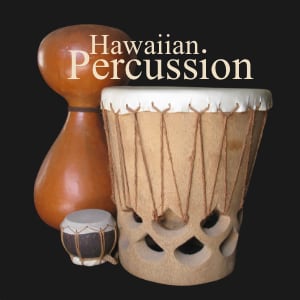
AudioHawaii

Hawaiian Percussionfor Kontakt & Logic Sampler (EXS24)
$29 USD
Hawaiian Percussion sample library consists of meticulously sampled authentic Hawaiian implements for EXS24 and Kontakt samplers. Every nuance of the implements were recorded and organized into easy to play instrument patches. From the hitting of the ipu on the floor to a double handed palm slap on the pahu, you will be able to create authentic Hawaiian implement tracks in your project. The instruments that were sampled are described below.
The Kontakt version requires the full version of Kontakt 6 or higher. It will not work in Kontakt Player.
- Ipu Heke
- Pahu
- Pūniu
- Kāʻekeʻeke Played on soft surface
- Kāʻekeʻeke Played on hard surface
- Pūʻili
- Small Ipu
- ʻŪlili
- E Hula Leʻaleʻa Mākou A song incorporating the percussion.
Your web browser does not support HTML5 audio. Please update to a newer web browser.
Specifications...
- Samples are recorded at 44.1k/24bits
- 10 velocity levels on each hit
- Rolls and single hits
- Most instruments are sampled in stereo
What you'll need...
- Full version of Kontakt 4+ or Logic Audio
- Keyboard Controller for your DAW
- A hard drive with at least 150MB of free space
- The capability to download a 135 MB zip file
Percussion implements have always been a part of Hawaiian culture. Instruments were fashioned from things that the Hawaiians had at there disposal. Gourds were made into ipus, coconut tree trunks were made into pahus, and the skin from sharks were made into drum skins. Bamboo was made into puili. Ka'eke'eke were made from the longest and straightest bamboo.
